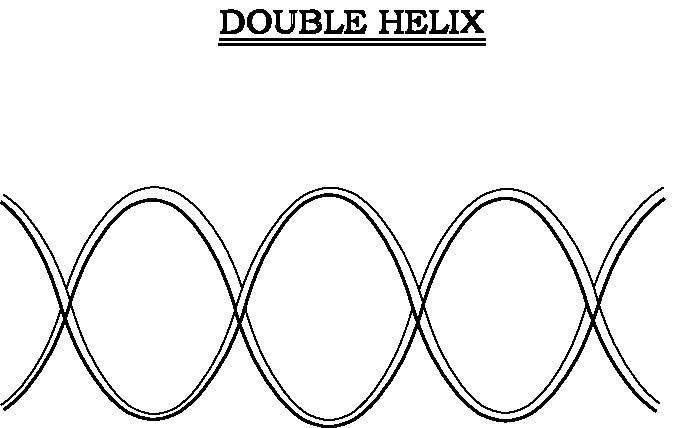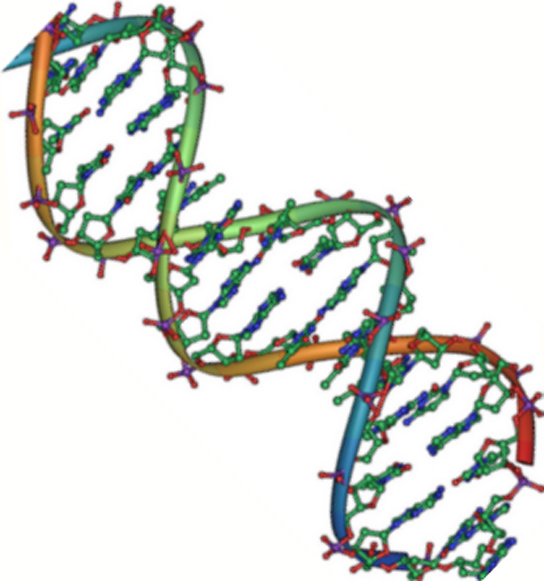

There are three hydrogen bonds between guanine and cytosine, and two hydrogen bonds between thymines and guanines. Adenines are always paired with thymines and cytosines and always paired with guanines. When the nucleotides from each strand undergo hydrogen bonding, they do so in a particular manner.

The outside of the helix contains the DNA strands, and the core of the helix contains the nitrogenous bases. The direction of the helix is almost always right-handed, i.e., if you imagine the two strands like a spiral staircase you are about to walk down, you would have to turn right to descend.

The helix turns approximately once every ten nucleotides. Some of the important features of the Watson/Crick model of the DNA double helix include: Helix DirectionalityĪ single molecule of DNA consists of two strands that twist around one another to form a helix. The markings beneath the writing are remnants of when it was modified to read “+ Rosalind” The Features of the DNA Double Helix Structure The plaque was once modified by a member of the public, who added “+ Franklin in recognition of the important role played by Rosalind Franklin! A plaque to commemorate the discovery of the DNA double helix outside of a pub in Cambridge. The pub, called The Eagle, erected a plaque inside and one outside to commemorate the occasion. Once they completed their research, they purportedly had a ‘eureka’ moment, and Crick ran to their local pub in Cambridge to announce that he and Watson had “discovered the secret to life.” You can read the original paper, complete with annotations, here. Through this, they created a model, which is broadly considered accurate decades later.

DOUBLE HELIX DEFINITION SERIES
They used a series of cardboard models, carefully constructing them until they formed a structure that made sense. Watson and Crick derived their model by putting this evidence, as well as X-ray crystallography data collected by Rosalind Franklin, into a structure that satisfied the parameters of all of the previously collected evidence. For example, it was already known that DNA is composed of nucleotides and that the ratio of purines: pyrimidines in a molecule of DNA is equal (known as Chargaff’s rule). Prior to the publication of their findings, much research had already been carried out, and some light shone, on the composition of DNA. In fact, his autobiography is titled “The Third Man of the Double Helix”. They later won the Nobel Prize for their research, along with Maurice Wilkins, who is often overlooked for his important role in the research that led to the breakthrough. The discovery was credited to James Watson, a biologist, and Francis Crick, a physicist, in the 1950s. The discovery of the double helix structure of DNA is one of the most important and well-known scientific breakthroughs. How was this complex structure uncovered? Structure of DNA nucleotide The Discovery of the Double Helix Structure of DNA
DOUBLE HELIX DEFINITION CODE
The combination of these four letters in molecules of DNA is what we call the genetic code, and this code contains all the instructions to build and run an entire organism!Įach of these polynucleotide strands is paired with a complementary strand and wraps around one another to form the double helix structure.


 0 kommentar(er)
0 kommentar(er)
